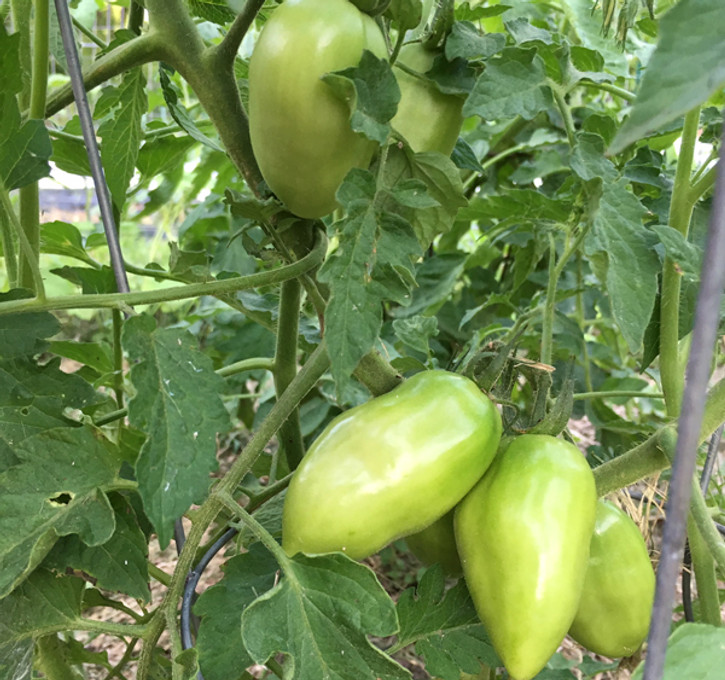
Better than San Marzano?
Posted by Seeds from Italy on 15th Jul 2019
Paste tomatoes are essential to every dedicated gardener who wants to preserve a bit of summer by making their own passata. With so many Italian paste tomato varieties available, how do you choose? Weather, soil, and scheduling can have a huge effect on tomatoes. What grows well for you one year might not another year. What grows well for your friend across town might not do well in your garden. So we advise trialing several varieties side by side for a few years, as we described in this previous article.
We asked Seeds from Italy customers to tell us their results when they grew two similar varieties side by side. We can’t guarantee that your experience will be the same as the customers we quote below, but the information might give you some insight into the differences you will see among similar varieties.
In the category of paste tomatoes, we looked for comparisons to the San Marzano, which is considered the gold standard for making paste, sauce, and juice. It is our most popular variety year after year, so we know that a lot of people do quite well with it. We were looking for experienced growers to tell us how our many other paste-type tomato varieties differ from the San Marzano.
Roma VF
Shari Lowery in Georgiana, Alabama, grew Roma VF alongside San Marzano and she much preferred the Roma. Roma plants were bigger and more vigorous — they “did not even flinch at the hot weather and humidity we have in Zone 8,” she said. “I definitely did not have to pamper this variety (whereas she did with the San Marzano.) The fruits were larger and she thought they were good for slicing as well as paste. Both varieties ripened at the same time, about 75-80 days.
Suzn Storer of Brookville, Ohio, found that Roma was smaller but did not crack like her San Marzanos did. Both were meaty but she preferred the taste of the Roma.
San Marzano Redorta
Janice Mosher of Alexandria, Virginia, grew San Marzano and San Marzano Redorta. She said it was a tough year for paste tomatoes in general, with disease bringing an early end to her plants. But the size of the Redortas made up for it. “One sufficed where five of the regular marzanos would be needed,” she said. This is not surprising to us because we have grown Redorta ourselves and the fruits are huge, without any sacrifice of flavor.
Holly Dumont of San Martin, California, also grew Redorta alongside San Marzano and found them much larger with thin skins. The regular San Marzano suffered more from blossom end rot and she dehydrated most of them, which she said improved the flavor.
Supermarzano
We have this hybrid variety in our garden this year and are very pleased with it. Whereas we often have a problem with blossom end rot on San Marzanos, the Supermarzano is perfectly formed. It’s very productive, with clusters of five or more tomatoes. It’s not as meaty as San Marzano, but it has excellent flavor and can be eaten fresh.
Summary
If you want to grow San Marzano, be aware that blossom end rot can be an issue in a wet year. It is caused by the plant’s inability to take up enough calcium and is usually a problem only with the first flush of fruits. The best defense is to get a soil test and apply the recommended amount of fertilizer at planting.
If you want a larger variety, try Redorta. There’s a good reason it’s named for a mountain in Italy!
And just to be sure you have covered all the scenarios that Nature might throw at you, grow a hybrid variety like Supermarzano or Scipio. Once you have grown a few varieties side by side several years running, you will know which you prefer.
